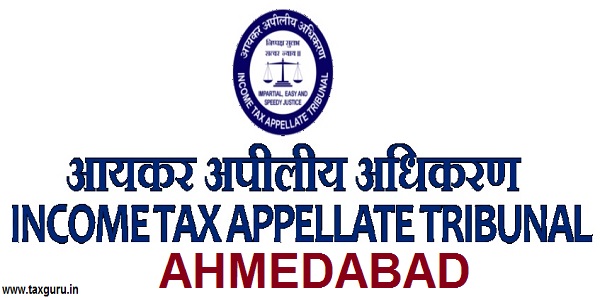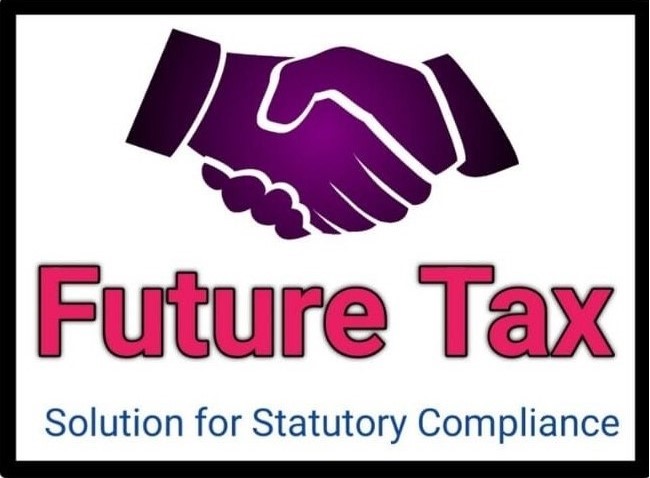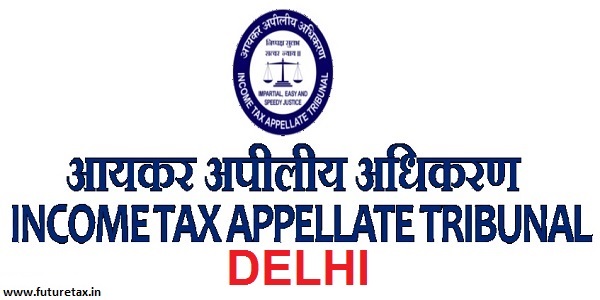
Deduction u/s. 54EC admissible as nexus between advance from sale of property and investment in NHAI bonds established in Tamil
- Tamil Tax upate News
- November 9, 2024
- No Comment
- 37
- 13 minutes read
Shital Piyushkumar Patel Vs ITO (ITAT Ahmedabad)
ITAT Ahmedabad held that benefit of deduction under section 54EC of the Income Tax Act allowed since nexus between advance received towards sale of property and investment made in NHAI bonds established.
Facts- During the assessment proceedings under Section 143(3) of the Act, it was observed that a portion of the property was sold on August 16, 2008, with the possession handed over to multiple parties. The total sale consideration claimed for this transaction was ₹8,25,00,000/-, which as per AO lacked documentary support or justification on part of the assessees.
Notably, primary issue under the present appeal is the admissibility of a deduction claimed u/s. 54EC for an investment of ₹50,00,000/- in bonds of the National Highway Authority of India (NHAI). AO initially allowed this deduction in the assessment order. However, upon reviewing the circumstances, the CIT noted that the investment was made on June 25, 2008, with a deemed allotment date of July 31, 2008. As the transfer of the property occurred at a later date on August 16, 2008, and the CIT(A) found the investment to have been made prior to the date of property transfer, CIT(Appeals) was of the view that the stipulated conditions of Section 54EC of the Act have been violated.
CIT(Appeals) dismissed the appeal of the assessee by observing that that the assessee did not meet the burden of proof u/s. 54EC of the Act. Consequently, the addition of ₹50,00,000/-made by the AO was confirmed by Ld. CIT(Appeals).
Conclusion- Bombay High Court in the case of CIT vs. Subhash Vinayak Supnekar, 77 taxmann.com 226 (Bombay) held that when amount received as advance by the assessee under an agreement to sell a capital asset is invested in specified Bonds, benefit of Section 54EC of the Act is available to the assessee.
Held that the assessee is eligible to claim deduction under Section 54EC of the Act since the assessee has been above to establish the direct nexus between the advance so received by the assesse towards sale of property and the investment made by the assessee in NHAI Bonds.
FULL TEXT OF THE ORDER OF ITAT AHMEDABAD
This appeal has been filed by the Assessee against the order passed by the Ld. Commissioner of Income Tax(Appeals), (in short “Ld. CIT(A)”), National Faceless Appeal Centre, (in short “NFAC”), Delhi vide order dated 28.02.2024 passed for A.Y. 2009-10.
2. The Assessee has taken the following grounds of appeal:-
“(1) That on facts, and in law, the learned National Faceless Appeal Centre (NFAC) has grievously erred in confirming the disallowance of claim or deduction of Rs.50,00,000/- u/s. 54EC of the Act.
(2) That on facts and in law, the entire claim of deduction ought to have been allowed as prayed for.
(3) The appellant craves leave to add, alter, amend any ground of appeal.”
3. The brief facts of the case are that an immovable property known as “Deepavali,” located on S.V. Road, Andheri (West), Mumbai, measuring 2865.60 square meters, was jointly purchased by brothers Shri Vijay Chaturbhai Patel and Dr. Kirti Chaturbhai Patel on October 27, 1959, for a total consideration of ₹61,000/-, including documentation expenses. Following the death of Shri Vijay C. Patel, the property ownership was shared among several parties, including Dr. Kirti C. Patel (50%), Smt. Madhuben V. Patel (16.67%), Shri Ripun V. Patel (16.66%), and Smt. Shital V. Patel (16.66%). After Shri Ripun V. Patel’s death in December 2004, his wife became a co-owner. During the assessment proceedings under Section 143(3) of the Act, it was observed that a portion of the property was sold on August 16, 2008, with the possession handed over to multiple parties. The total sale consideration claimed for this transaction was ₹8,25,00,000/-, which as per the Assessing Officer lacked documentary support or justification on part of the assessees. Consequently, to ensure the assessment was completed before the limitation period expired on December 31, 2011, the AO consulted the prevailing jantri/fair market value of residential properties in Andheri (West), and determined a market value of ₹11,651/- per square foot. This led to a calculated sale value of approximately ₹35,93,75,095/- for the entire property, to be equally shared among the co-owners. The Learned Commissioner of Income Tax directed the AO to adopt a sale consideration of ₹2.75/- crores, which represented one-third of the ₹8.25/- crores. Both the assessee and the Revenue subsequently filed cross-appeals against this decision, with the Hon’ble ITAT remanding the case to the AO to compute capital gains, allowing for the substitution of the fair market value of the property as of April 1, 1981, as the cost of acquisition. The AO eventually accepted this substitution and determined the cost of acquisition at ₹11,56,641/- and the indexed cost at ₹67,31,650/-. The primary issue under the present appeal is the admissibility of a deduction claimed under Section 54EC for an investment of ₹50,00,000/- in bonds of the National Highway Authority of India (NHAI). The AO initially allowed this deduction in the assessment order dated December 30, 2011. However, upon reviewing the circumstances, the CIT noted that the investment was made on June 25, 2008, with a deemed allotment date of July 31, 2008. As the transfer of the property occurred at a later date on August 16, 2008, and the CIT(A) found the investment to have been made prior to the date of property transfer, Ld. CIT(Appeals) was of the view that the stipulated conditions of Section 54EC of the Act have been violated. In response to the AO’s notice under Section 142(1), the assessee submitted the necessary documents related to the NHAI bonds, but the AO disallowed the deduction by observing that the legislation explicitly requires that investments in specified long-term assets be made after the date of the property transfer, meaning that the deduction was inappropriately claimed, since the investment was sourced from personal funds rather than capital gains from the property sale.
4. In appeal, Ld. CIT(Appeals) dismissed the appeal of the assessee by observing that that the assessee did not meet the burden of proof under Section 54EC of the Act. Consequently, the addition of ₹50,00,000/-made by the AO was confirmed by Ld. CIT(Appeals).
5. The assessee is in appeal before us against the addition made by the Assessing Officer.
6. Before us, the Counsel for the asessee submitted that the issue under appeal is on a limited point, which is whether the assessee is eligible to claim deduction under Section 54EC of the Act, in respect of investments made in NHAI Bonds. This deduction was denied to the assessee in the first round of litigation, since the investment was found to be made by the assessee prior to the date of sale of asset, while the requirement of Section 54EC of the Act is that investment is required to be made within a period of six months from the date of transfer of assets. The ITAT vide order dated 12.07.2017 had restored the matter to the file of AO for reconsideration of the deduction in light of the CBDT Circular clarifying that investments made prior to transfer of asset, out of the advances received are also eligible for exemption under Section 54EC of the Act. We observe that vide order sheet dated 26.06.2024 this Bench had directed the Ld. Counsel for the assessee to file bank statement of the assessee, which had been earlier filed with the AO in the second round of proceedings, to prove the nexus between the advance received by the assessee on account of sale of property and investment made in the NHAI Bonds as per Section 54EC of the Act. Before us, during the course of hearing, the Counsel for the assessee has furnished bank statement, in which the assessee pointed out that the advance for sale of property was received by the assessee on 25.06.2008 and on the very same date i.e. on 25.06.2008, the assessee had issued a Demand Draft for purpose of investment in National Highway Authority of India (NHAI) Bonds. Therefore, the Counsel for the assessee submitted that it is evident from the bank statement that there is a direct nexus between the advance received by the assessee towards sale of property and investment made by the assessee in the NHAI Bonds amounting to Rs. 50 lakhs, as is evident from the bank statement of the assessee, submitted during the course of appellate proceedings.
7. In response, the Ld. D.R. placed reliance on the observations made by Ld. CIT(A) in the appellate order.
8. We have heard the rival contentions and perused the material on record.
9. It would also useful to reproduce Circular No. 359 dated 10.05.1983, for ready reference which specifies that if the assessee invest the earnest money or advance money in specified assets before the date of transfer of asset, the amounts so invested will qualify of exemption under Section 54EC of the Act:
“SECTION 54F OF THE INCOME-TAX ACT, 1961 – CAPITAL GAINS –
EXEMPTION OF, IN CASE OF INVESTMENT IN RESIDENTIAL HOUSE –
ASSESSEE INVESTING EARNEST MONEY IN SPECIFIED ASSETS
BEFORE DATE OF TRANSFER – WHETHER AMOUNT SO INVESTED
QUALIFIES FOR EXEMPTION
CIRCULAR : NO. 359 [F. NO. 207/8/82-IT(A-II)], DATED 10-5-1983
1. Section 54E provides for exemption of long-term capital gains if the net consideration is invested by the assessee in specified assets within a period of six months after the date of such transfer. A technical interpretation of section 54E could mean that the exemption from tax on capital gains would not be available if part of the consideration is invested prior to the date of execution of the sale deed as the investment cannot be regarded as having been made within a period of six months after the date of transfer.
2. On consideration of the matter in consultation with the Ministry of Law, it is felt that the foregoing interpretation would go against the purpose and spirit of the section. As the section contemplates investment of the net consideration in specified assets for a minimum period and as earnest money or advance is a part of the sale consideration, the Board have decided that if the assessee invests the earnest money or the advance received in specified assets before the date of transfer of asset, the amount so invested will qualify for exemption under section 54E.”
10. Further, we observe that the Bombay High Court in the case of CIT vs. Subhash Vinayak Supnekar, 77 taxmann.com 226 (Bombay) held that when amount received as advance by the assessee under an agreement to sell a capital asset is invested in specified Bonds, benefit of Section 54EC of the Act is available to the assessee. While passing the order the High Court made the following observation:
“6. We find that the Sale Deed dated 5th April, 2007 is produced. This itself in clause (d) thereof records the fact that the Agreement to Sale had been entered into on 21st February, 2006 in respect of the subject property and the amounts being received by the vendor (respondent assessee) under that Agreement to Sale. Thus, these amounts when received as advance under an Agreement to Sale of capital asset are invested in specified bonds, the benefit of Section 54EC of the Act is available. In the above view, the Tribunal holds that the facts of the present case are similar to the facts before the Tribunal in Bhitkulal Chandak HUF (supra). The Revenue does not dispute the same before us. Moreover, on almost identical fact, this Court in Mrs. Parveen P. Bharucha v. Dy. CIT [2012] 348 ITR 325/[2013] 212 Taxman 66/[2012] 28 taxmann.com 274, held that the earnest money received on sale of asset. When invested in specified bonds under Section 54EC of the Act, is entitled to the benefit of Section 54EC of the Act, this was in the context of reopening of an assessment and reliance was placed upon DBDT Circular No. 359 dated 10th May, 1983 in the context of Section 54E of the Act.
7. Mr. Bajpayee, learned Counsel for the Revenue very fairly points out that the Revenue had preferred an appeal against the order of the Tribunal in Bhikulal Chandak HUF (supra) to this Court (Nagpur Bench) being Income Tax Appeal No. 68 of 2009. This Court by an order dated 22nd August, 2010 refused to entertain the Revenue’s above appeal from the decision of the Tribunal in Bhikulal Chandak HUF (supra). In the above view, the question as proposed for our consideration in the present facts does not give rise to any substantial question of law. Thus, not enternatied.
8. Accordingly, the appeal is dismissed. No order as to costs.”
11. In view of the above, in the result, we are of the considered view that the assessee is eligible to claim deduction under Section 54EC of the Act since the assessee has been above to establish the direct nexus between the advance so received by the assesse towards sale of property and the investment made by the assessee in NHAI Bonds.
12. In the result, the appeal of the assessee is allowed.
This Order pronounced in Open Court on 23/10/2024




